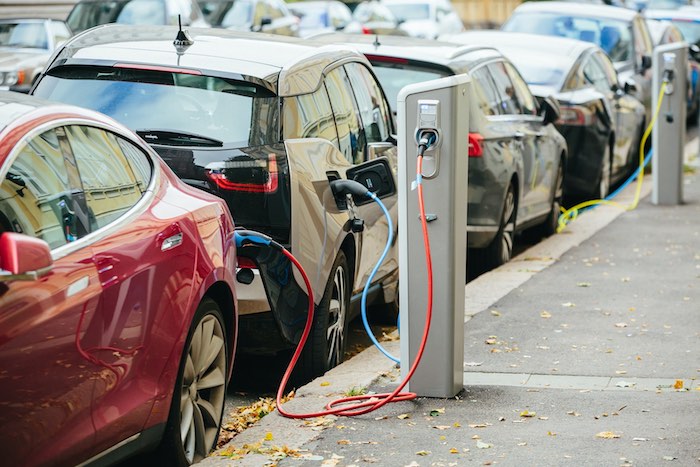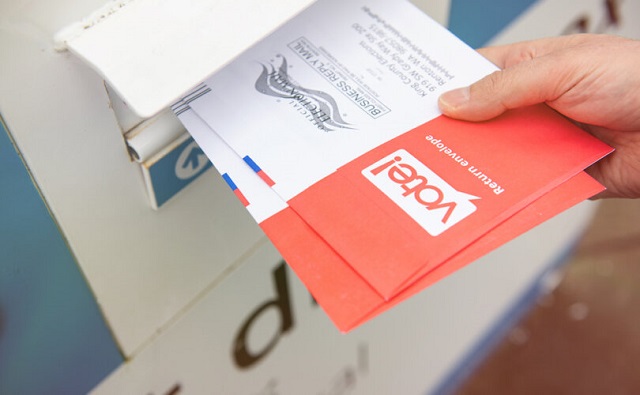Automotive
Lithium Prices: What They Tell Us About the Popularity of Electric Vehicles

From EnergyNow Media
By Jim Warren
The online database, Trading Economics, indicates that in June 2023 the global price for lithium had risen to $59,212 per tonne. But by November it had fallen by more than half to $27,218. Prices have continued to plummet. As of December 31, lithium was selling for just $18,242 per tonne.
How could this be? Electric vehicle (EV) mandates established in many rich developed countries over the past few years had analysts predicting that if targets were actually met, the world would need 388 new lithium mines by 2035. A Fraser Institute study suggests that getting enough mines built to satisfy all the mandates will be a problem. It takes from seven to ten years to get a mine financed, approved and built.
Canada’s Environment Minister, Steven Guilbeault is certainly trying to drive up demand for lithium. The federal government’s Zero Emissions Vehicle Standard insists that by 2030, 20% of all new passenger cars, SUVs and light trucks sold in Canada must be greenhouse gas emissions free. New battery plants are being handsomely subsidized in Canada to power all of the new electric cars that will presumably be required. With similarly aggressive mandates in Europe and US states led by California there should be heavy demand for lots of batteries and a mountain of lithium.
The most likely explanation for collapsing lithium prices is US consumers’ reluctance to embrace electric vehicles. The Economist reports that EVs accounted for just 8% of new vehicle sales in America this past year. GM was only able to sell 20,000 EVs, but it did manage to sell over half a million fossil-fueled vehicles. Disappointing demand for EVs prompted GM to shelve plans to spend $4 bn to convert one of its plants to electric pickup truck production. Ford has similarly lost enthusiasm for EVs. This past fall it decided to delay plans to invest $12bn in EV production. Companies that make lithium batteries for EVs have responded accordingly. This past fall battery plants in Georgia and Michigan laid off hundreds of employees. Fewer batteries translated into less demand for lithium.
It would appear that EV adoption goals established under Joe Biden’s eye-wateringly expensive green transition initiative (disguised as the “Inflation Reduction Act,”) are not being met. The Biden plan offers tax credits of up to $7,500 for people who purchase EVs. However that hasn’t been a sufficient sweetener. The average EV sold in the US has a $52,000 price tag and that doesn’t account for additional costs like wiring a home charging set up. California, Florida and Texas account for over half of US EV sales and are also responsible for high average sticker prices. Ostensibly virtuous EV buyers in the US have a bit of hypocrisy going on. They’ll happily drive EVs as long as they are full size SUVs. Batteries are heavy which makes EVs heavier than gas and diesel fueled vehicles. And, electric SUVs are especially heavy—heavy enough to increase the chances of deadly collisions. Tesla has apparently created a super-sized SUV, designed for wealthy California drivers, that makes the Hummer look like a toy. And, because they are extra heavy, driving them uses more electricity and it takes extra energy and materials to build them. Furthermore, given that fossil fuels still account for 60% of the electricity generated in the US, EVs are less environmentally friendly than advertised. They are far from being “emissions free.”
EVs are indeed more popular in Europe and China. In Europe 1.5 million EVs were sold this past year and 3.5 million were sold in China. The models sold in China are small, zippy units that don’t weigh much. However, like in the US, around 60% of the electricity consumed in China is generated by burning fossil fuels (mostly coal).
Despite having a copycat EV mandate that mirrors those in Europe, Canadian sales have been even less stellar than what the US has been able to achieve. In 2021, EVs accounted for just 5.3% of new car sales in Canada. Most of them were sold in Ontario, BC and Quebec (55,229) which makes sense—those are the provinces where most Canadians and most climate-alarmed Canadians live. In all the rest of Canada just 7,301 electric vehicles were purchased.
Clearly, the adoption of electric vehicles has failed to meet the overly ambitious targets set by environmentally-friendly policy makers. This result lines up with the litany of missteps and missed targets that have plagued green transition projects over the past two years. The failures include the big decline in demand for new solar and wind power projects and the reversal of greenhouse gas emissions reduction projects in the UK and Europe. An issue this could raise for us in Canada is that Steven Guilbeault might see the international data and worry that his transition plans need to be beefed-up. He could make them even more onerous, expensive and ludicrous.
Automotive
The EV ‘Bloodbath’ Arrives Early

 From the Daily Caller News Foundation
From the Daily Caller News Foundation
By David Blackmon
Ever since March 16, when presidential candidate Donald Trump created a controversy by predicting President Joe Biden’s efforts to force Americans to convert their lives to electric-vehicle (EV) lifestyles would end in a “bloodbath” for the U.S. auto industry, the industry’s own disastrous results have consistently proven him accurate.
The latest example came this week when Ford Motor Company reported that it had somehow managed to lose $132,000 per unit sold during Q1 2024 in its Model e EV division. The disastrous first quarter results follow the equally disastrous results for 2023, when the company said it lost $4.7 billion in Model e for the full 12-month period.
While the company has remained profitable overall thanks to strong demand for its legacy internal combustion SUV, pickup, and heavy vehicle models, the string of major losses in its EV line led the company to announce a shift in strategic vision in early April. Ford CEO Jim Farley said then that the company would delay the introduction of additional planned all-electric models and scale back production of current models like the F-150 Lightning pickup while refocusing efforts on introducing new hybrid models across its business line.
General Motors reported it had good overall Q1 results, but they were based on strong sales of its gas-powered SUV and truck models, not its EVs. GM is so gun-shy about reporting EV-specific results that it doesn’t break them out in its quarterly reports, so there is no way of knowing what the real bottom line amounts to from that part of the business. This is possibly a practice Ford should consider adopting.
After reporting its own disappointing Q1 results in which adjusted earnings collapsed by 48% and deliveries dropped by 20% from the previous quarter, Tesla announced it is laying off 10 percent of its global workforce, including 2,688 employees at its Austin plant, where its vaunted Cybertruck is manufactured. Since its introduction in November, the Cybertruck has been beset by buyer complaints ranging from breakdowns within minutes after taking delivery, to its $3,000 camping tent feature failing to deploy, to an incident in which one buyer complained his vehicle shut down for 5 hours after he failed to put the truck in “carwash mode” before running it through a local car wash.
Meanwhile, international auto rental company Hertz is now fire selling its own fleet of Teslas and other EV models in its efforts to salvage a little final value from what is turning out to be a disastrous EV gamble. In a giant fit of green virtue-signaling, the company invested whole hog into the Biden subsidy program in 2021 with a mass purchase of as many as 100,000 Teslas and 50,000 Polestar models, only to find that customer demand for renting electric cars was as tepid as demand to buy them outright. For its troubles, Hertz reported it had lost $392 million during Q1, attributing $195 million of the loss to its EV struggles. Hertz’s share price plummeted by about 20% on April 25, and was down by 55% for the year.
If all this financial carnage does not yet constitute a “bloodbath” for the U.S. EV sector, it is difficult to imagine what would. But wait: It really isn’t all that hard to imagine at all, is it? When he used that term back in March, Trump was referring not just to the ruinous Biden subsidy program, but also to plans by China to establish an EV-manufacturing beachhead in Mexico, from which it would be able to flood the U.S. market with its cheap but high-quality electric models. That would definitely cause an already disastrous domestic EV market to get even worse, wouldn’t it?
The bottom line here is that it is becoming obvious even to ardent EV fans that US consumer demand for EVs has reached a peak long before the industry and government expected it would.
It’s a bit of a perfect storm, one that rent-seeking company executives and obliging policymakers brought upon themselves. Given that this outcome was highly predictable, with so many warning that it was in fact inevitable, a reckoning from investors and corporate boards and voters will soon come due. It could become a bloodbath of its own, and perhaps it should.
David Blackmon is an energy writer and consultant based in Texas. He spent 40 years in the oil and gas business, where he specialized in public policy and communications.
Automotive
Biden’s Kill Switch: The Growing Threat of Government Control of Your Car

From StosselTV
The government may soon be able to shut down your car. Biden’s $1.2 trillion infrastructure bill includes a kill switch for new cars.
In an effort to reduce drunk driving, government wants devices in cars that will monitor and limit impaired driving. But there’s a big problem: these devices give government control over your car.
Automotive engineer and former vintage race car driver Lauren Fix points out the dangers in my video.
After 40+ years of reporting, I now understand the importance of limited government and personal freedom.
——————————————
Libertarian journalist John Stossel created Stossel TV to explain liberty and free markets to young people.
Prior to Stossel TV he hosted a show on Fox Business and co-anchored ABC’s primetime newsmagazine show, 20/20.
Stossel’s economic programs have been adapted into teaching kits by a non-profit organization, “Stossel in the Classroom.” High school teachers in American public schools now use the videos to help educate their students on economics and economic freedom. They are seen by more than 12 million students every year.
Stossel has received 19 Emmy Awards and has been honored five times for excellence in consumer reporting by the National Press Club. Other honors include the George Polk Award for Outstanding Local Reporting and the George Foster Peabody Award.
————
To get our new weekly video from Stossel TV, sign up here: https://www.johnstossel.com/#subscribe ————
-

 espionage19 hours ago
espionage19 hours agoOne in five mail-in voters admitted to committing voter fraud during 2020 election: Rasmussen poll
-

 Business18 hours ago
Business18 hours agoHonda deal latest episode of corporate welfare in Ontario
-

 Automotive11 hours ago
Automotive11 hours agoThe EV ‘Bloodbath’ Arrives Early
-

 Frontier Centre for Public Policy2 days ago
Frontier Centre for Public Policy2 days agoBudget 2024 as the eve of 1984 in Canada
-

 COVID-192 days ago
COVID-192 days agoPfizer reportedly withheld presence of cancer-linked DNA in COVID jabs from FDA, Health Canada
-

 National2 days ago
National2 days agoAnger towards Trudeau government reaches new high among Canadians: poll
-

 COVID-192 days ago
COVID-192 days agoTrudeau gov’t has paid out over $500k to employees denied COVID vaccine mandate exemptions
-

 International2 days ago
International2 days agoRFK Jr tells EWTN: Politicization of the CIA, FBI, Secret Service under Biden is ‘very troubling’








